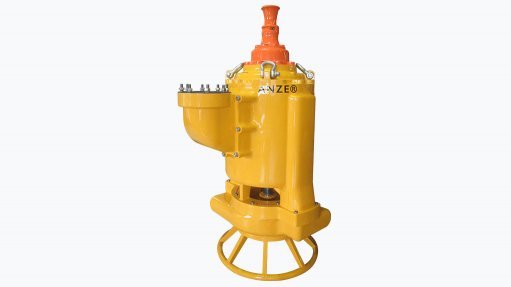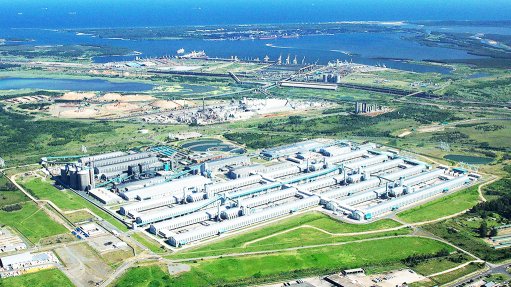Summit to address minerals beneficiation, trade


NOMVULA NHLAPO With global demand for critical minerals expected to rise by up to 500% by 2050 in Africa, South Africa, in particular, must move beyond extraction to integrated development, innovation and job creation
Fostering collaboration and development strategies for the sustainable extraction, beneficiation and trade of critical minerals, such as ferrochrome and ferromanganese, will be addressed at this year’s African Critical Minerals Summit (ACMS) 2025, which was held from August 25 to 26 at the Indaba Hotel, in Johannesburg.
Attendees could anticipate a “high-impact gathering featuring senior policymakers, industry leaders, researchers and investors”, said ACMS communication and marketing head Nomvula Nhlapo.
“This summit offers plenary discussions, break-out panels and targeted satellite sessions focused on exploration, beneficiation, trade and responsible infrastructure development across the critical mineral value chain,” she highlighted.
Past editions of the summit have allowed for cross-sectoral dialogue, the forming of new partnerships and the acceleration of investment pipelines. Through panel discussions, pitching sessions, workshops and networking, the ACMS has helped to inject momentum into beneficiation initiatives and policy formulation.
Nhlapo noted that mining stakeholders repeatedly cite the platform as pivotal in stimulating innovation and joint ventures across the African minerals’ ecosystem.
This year, the summit expanded its interactive format, including executive roundtables and investor-matchmaking sessions to deepen engagement and focus on outcomes.
It also added thematic tracks on green technology, decarbonisation and geopolitical risk, and built on the success of ACMS 2024.
There was also a tightening of the summit’s alignment with national policy imperatives and curated sessions to reflect real-time regulatory developments in beneficiation and export control frameworks.
“We believe this summit is more than a convening, it’s a launchpad for Africa’s minerals-led industrial strategy. With global demand for critical minerals expected to rise by up to 500% by 2050 in Africa, South Africa, in particular, must move beyond extraction to integrated development, innovation and job creation.
“Now is the time to position our continent as a globally competitive, value-adding powerhouse in critical minerals,” Nhlapo elaborated.
Major Challenges, Policy Appraisal, Resource Capitalisation
Some of the key challenges facing the critical minerals sector include energy insecurity, infrastructure deficits, insufficient beneficiation capacity and fragmented regulations – all crucial factors that are hampering the transition of mineral explorers to locally integrated industrial players, said Nhlapo.
Unreliable and costly electricity, which accounts for up to 40% of production costs for the average mining company, has triggered smelter shutdowns and reduced global competitiveness, while logistics bottlenecks in rail and port networks further limit export capacity.
“To address these challenges, sector policies should encourage green energy infrastructure, [the] reform of transport logistics and the establishment of beneficiation hubs within special economic zones (SEZs).”
South Africa’s new critical minerals and metals strategy, launched in May, promotes local beneficiation through targeted incentives, SEZs and differentiated power tariffs, aiming to reinvigorate ferroalloy smelting and foster downstream processing, she added.
However, Nhlapo noted that interventions, such as export taxes on chrome ore, remain contentious, with industry groups warning that they could reduce profitability and investment if implemented without consideration of competitiveness and technical capacity.
The ACMS served as a “vital convening platform” where diverse stakeholders can collaborate, innovate and drive policy that supports sustainable, inclusive growth within the critical minerals sector.
South Africa’s leadership in global manganese and chrome reserves, along with significant vanadium holdings, “positions it ideally” to scale up value-added processing of these critical minerals. Investing in domestic smelting, battery component manufacturing and integrated manufacturing zones will enable South Africa to capture more value within critical mineral value chains, Nhlapo concluded.
Article Enquiry
Email Article
Save Article
Feedback
To advertise email advertising@creamermedia.co.za or click here
Announcements
What's On
Subscribe to improve your user experience...
Option 1 (equivalent of R125 a month):
Receive a weekly copy of Creamer Media's Engineering News & Mining Weekly magazine
(print copy for those in South Africa and e-magazine for those outside of South Africa)
Receive daily email newsletters
Access to full search results
Access archive of magazine back copies
Access to Projects in Progress
Access to ONE Research Report of your choice in PDF format
Option 2 (equivalent of R375 a month):
All benefits from Option 1
PLUS
Access to Creamer Media's Research Channel Africa for ALL Research Reports, in PDF format, on various industrial and mining sectors
including Electricity; Water; Energy Transition; Hydrogen; Roads, Rail and Ports; Coal; Gold; Platinum; Battery Metals; etc.
Already a subscriber?
Forgotten your password?
Receive weekly copy of Creamer Media's Engineering News & Mining Weekly magazine (print copy for those in South Africa and e-magazine for those outside of South Africa)
➕
Recieve daily email newsletters
➕
Access to full search results
➕
Access archive of magazine back copies
➕
Access to Projects in Progress
➕
Access to ONE Research Report of your choice in PDF format
RESEARCH CHANNEL AFRICA
R4500 (equivalent of R375 a month)
SUBSCRIBEAll benefits from Option 1
➕
Access to Creamer Media's Research Channel Africa for ALL Research Reports on various industrial and mining sectors, in PDF format, including on:
Electricity
➕
Water
➕
Energy Transition
➕
Hydrogen
➕
Roads, Rail and Ports
➕
Coal
➕
Gold
➕
Platinum
➕
Battery Metals
➕
etc.
Receive all benefits from Option 1 or Option 2 delivered to numerous people at your company
➕
Multiple User names and Passwords for simultaneous log-ins
➕
Intranet integration access to all in your organisation















